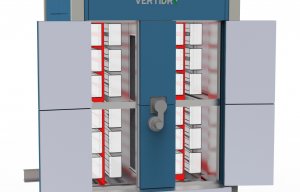
Monforts launches new VertiDry
Long-time Monforts user Luckytex, Thailand, has installed a Thermex 6500 hotflue system for continuous dyeing as part of its strategy to move more strongly into value-added production and beat competition from the high-volume, lower-cost producers in other parts of Asia. The company has also invested in a Monforts MXL moist cross-linking process, and a Montex 6500 stenter. “Thailand is no longer a low-cost textile producer,” commented Luckytex Deputy Managing Director, Li Kin Shing. “We must innovate. Innovation means survival. This is why we have been investing in this technology.” Although Thailand was until recent times considered a low-cost producer, the country’s labour costs have been steadily rising, the company reports. It also faces intense competition from other nearby producers in Vietnam, Laos, Cambodia, Bangladesh and China. Luckytex believes the predicted rise of production in Myanmar is going to increase competition even further.
13th November 2013
Innovation in Textiles
|
Moenchengladbach
Long-time Monforts user Luckytex, Thailand, has installed a Thermex 6500 hotflue system for continuous dyeing as part of its strategy to move more strongly into value-added production and beat competition from the high-volume, lower-cost producers in other parts of Asia.
The company has also invested in a Monforts MXL moist cross-linking process, and a Montex 6500 stenter. “Thailand is no longer a low-cost textile producer,” commented Luckytex Deputy Managing Director, Li Kin Shing. “We must innovate. Innovation means survival. This is why we have been investing in this technology.”
Although Thailand was until recent times considered a low-cost producer, the country’s labour costs have been steadily rising, the company reports. It also faces intense competition from other nearby producers in Vietnam, Laos, Cambodia, Bangladesh and China. Luckytex believes the predicted rise of production in Myanmar is going to increase competition even further.
Luckytex produces polyester and cotton blended fabrics, 100 % cotton fabrics, 100 % polyester spun fabrics, polyester filament, taffeta, and denim, as well as industrial materials, such as dipped cord for air-conditioner, brake and power-steering hoses, and nylon airbag fabric.
Ranking within Thailand’s top 10 textiles producers, Luckytex was established in 1960 as a venture between Hong Kong and Thai-Chinese interests. Its first mill was for spinning and weaving, and the second, which opened shortly after, was for dyeing and finishing. A third mill was added in 1976.
The three Luckytex mills are located in Samut Prakarn, a neighbouring province of Bangkok. These factories are linked through flow of production, especially in the manufacturing of spun fabrics and taffeta.
Mill number one operates spinning and weaving for production of spun fabrics and transfers this to Mill number two for bleaching, dyeing and finishing. Mill number three produces taffeta fabrics and transfers this produce to Mill number two for dyeing and finishing.
The Monforts equipment is installed in Mill number two, which employs about 700 people. The first Monforts machine to be installed was a Monfortex in 1992. A second Monfortex was installed in 1997, and a third in 2003. All three of these machines are still working today.
Installation of the three-chamber Thermex 6500 continuous dyeing line is expected to allow Luckytex to develop new high-density fabrics and special finishes. The new Thermex is currently processing materials of 120 gm/m², but this is expected to increase to 200 gm/m². The width is usually 160 cm.
Earlier this year the company installed a Monforts MXL 7000 continuous moist cross-linking unit which allows, for example, non-iron, laundry fresh and wrinkle-free properties, particularly on cotton fabrics at a reaction of the time required by batch methods. Process times are reduced from more than 20 hours to less than three minutes, the company reports.
The MXL process line comprises a padder, a stretching field and a Thermex hotflue treatment chamber. It is being used principally for 100 % cotton woven fabrics along with some cotton blended with polyester woven fabrics.
The recently installed Montex 6500 stenter is being used almost exclusively for taffeta, which Luckytex believes offers more potential as a market.
“The past two years has been a time of heavy investment for us,” said Mr Li. “We believe we have reached the strategic point we are aiming for, in order to increase our value-added revenue.”

Business intelligence for the fibre, textiles and apparel industries: technologies, innovations, markets, investments, trade policy, sourcing, strategy...
Find out more